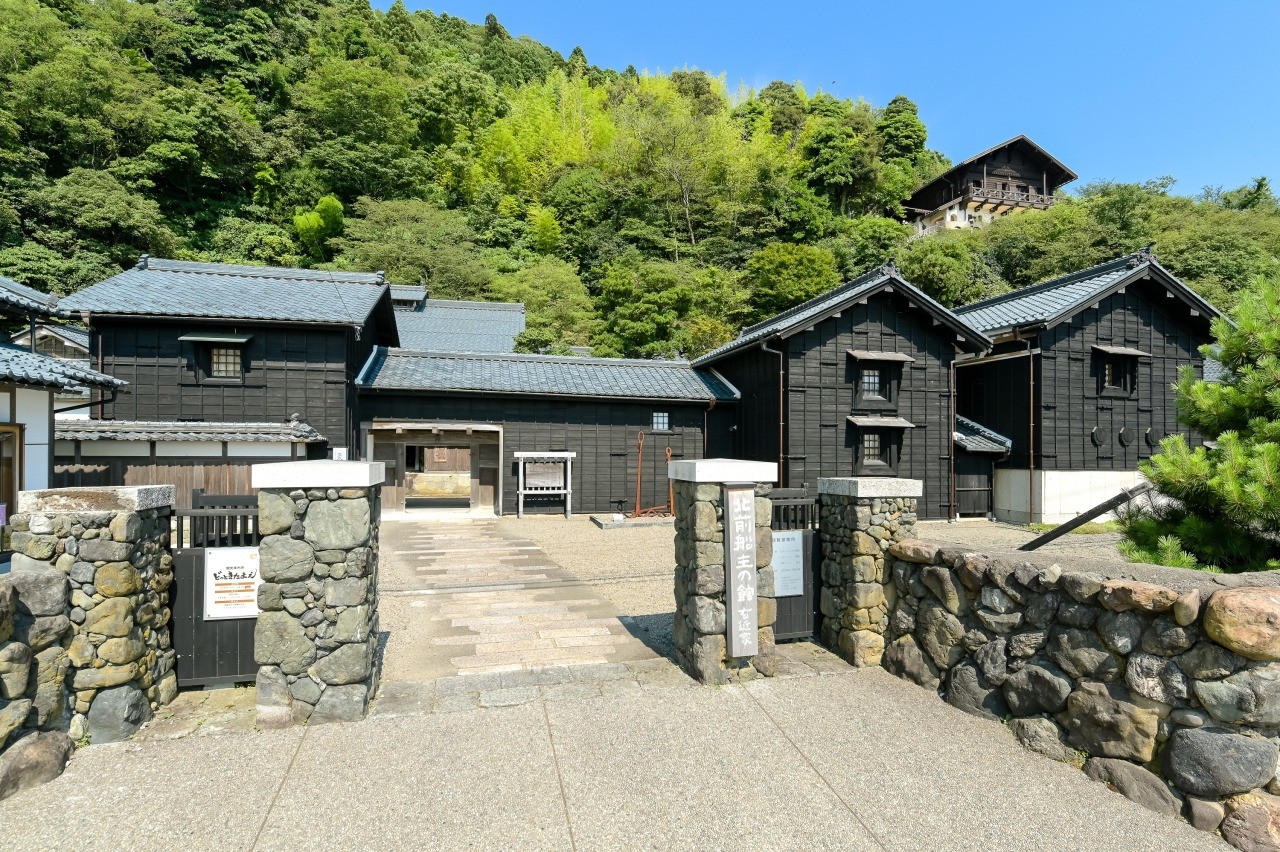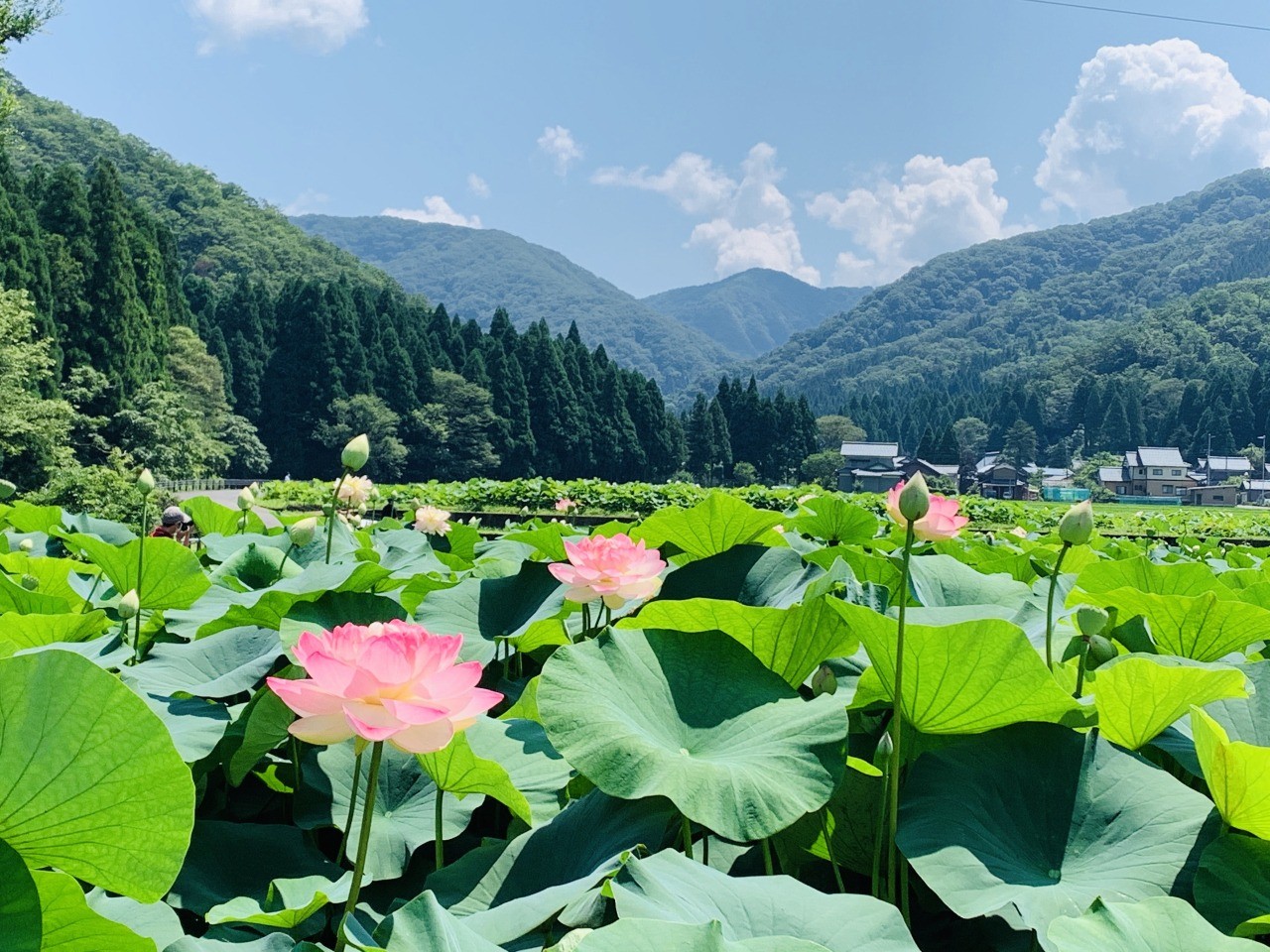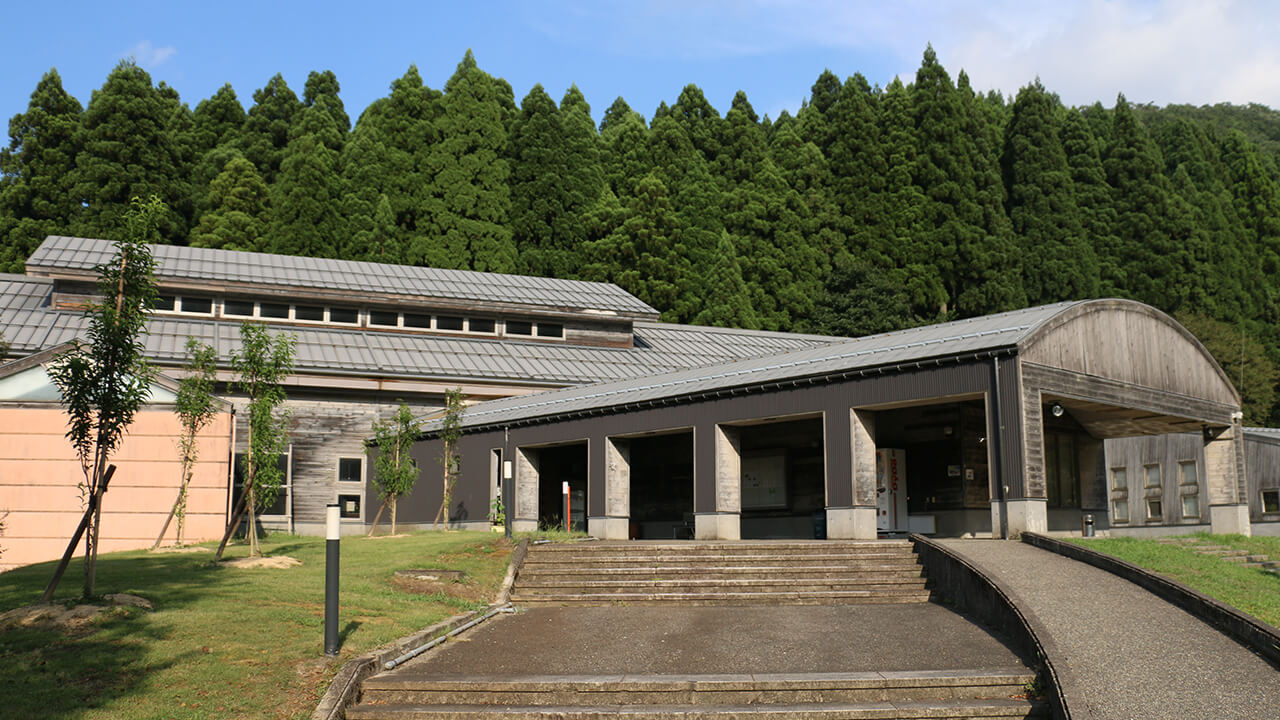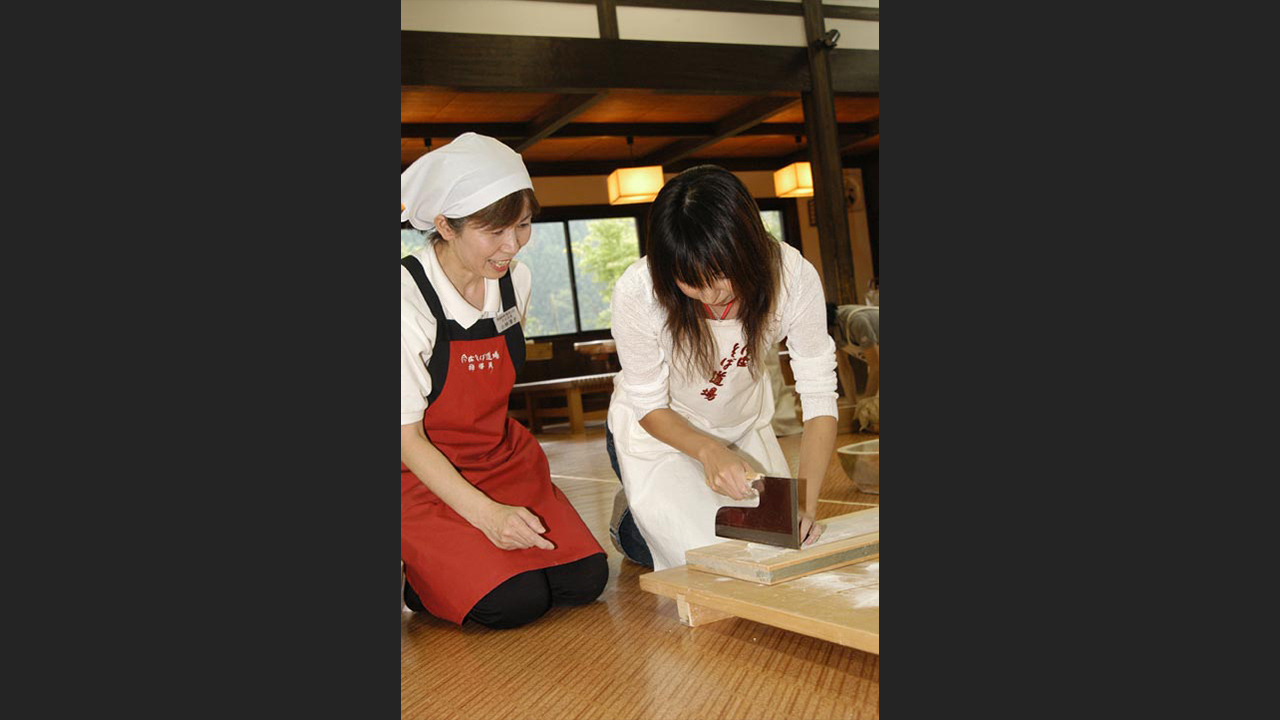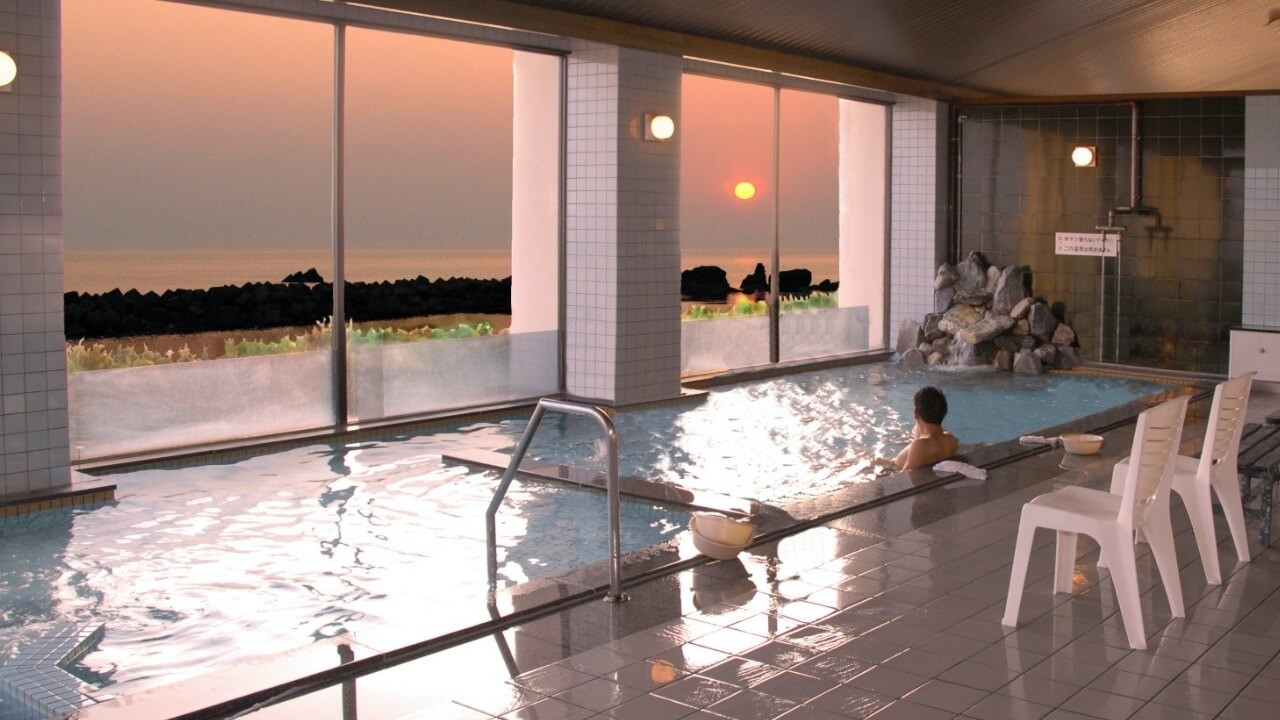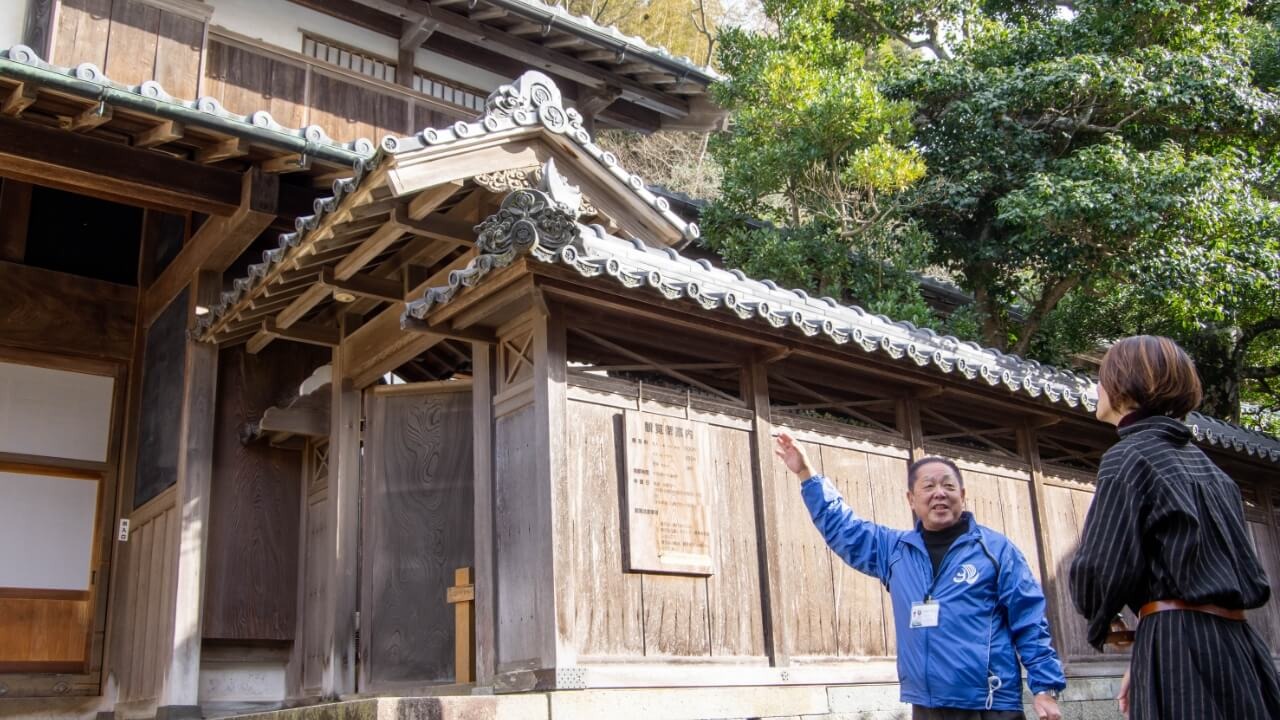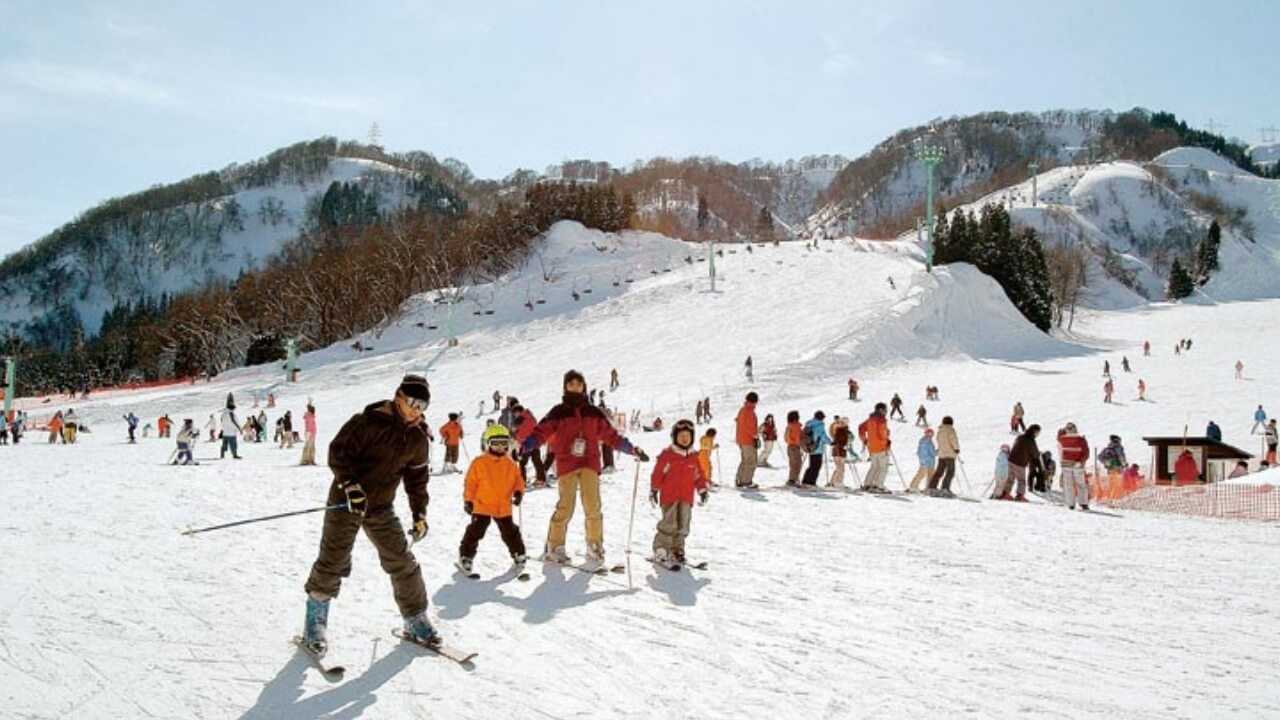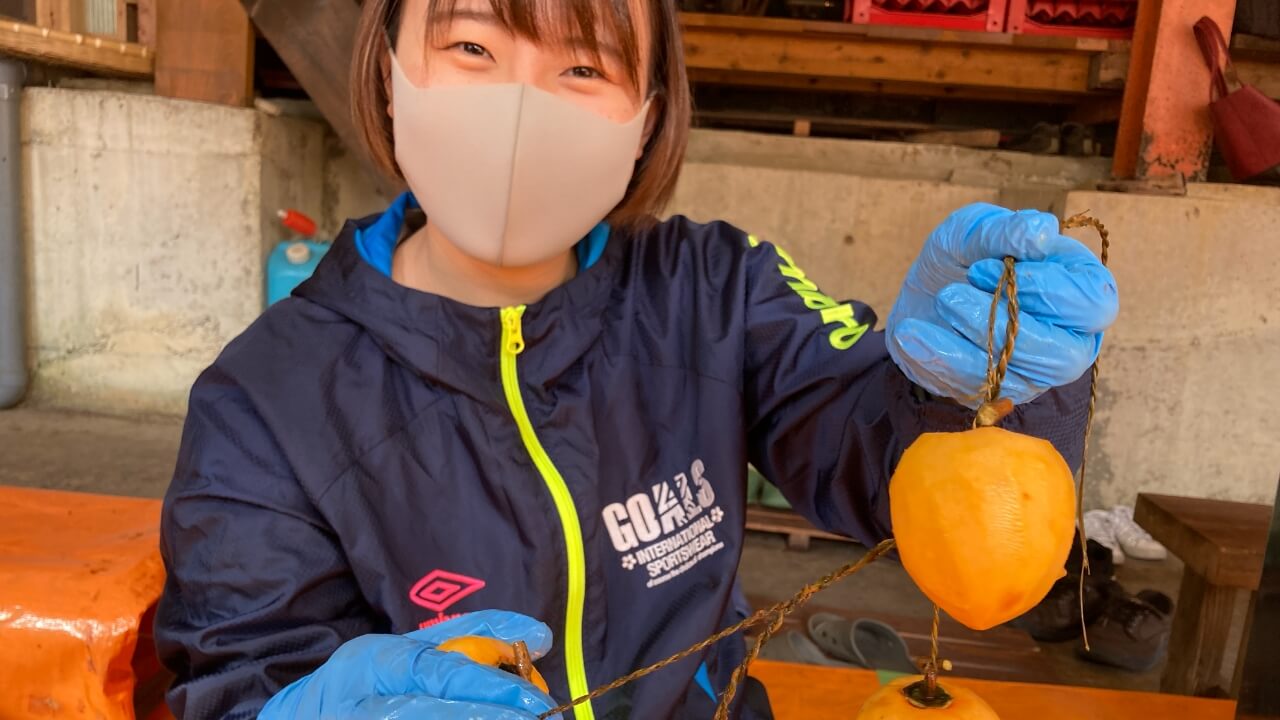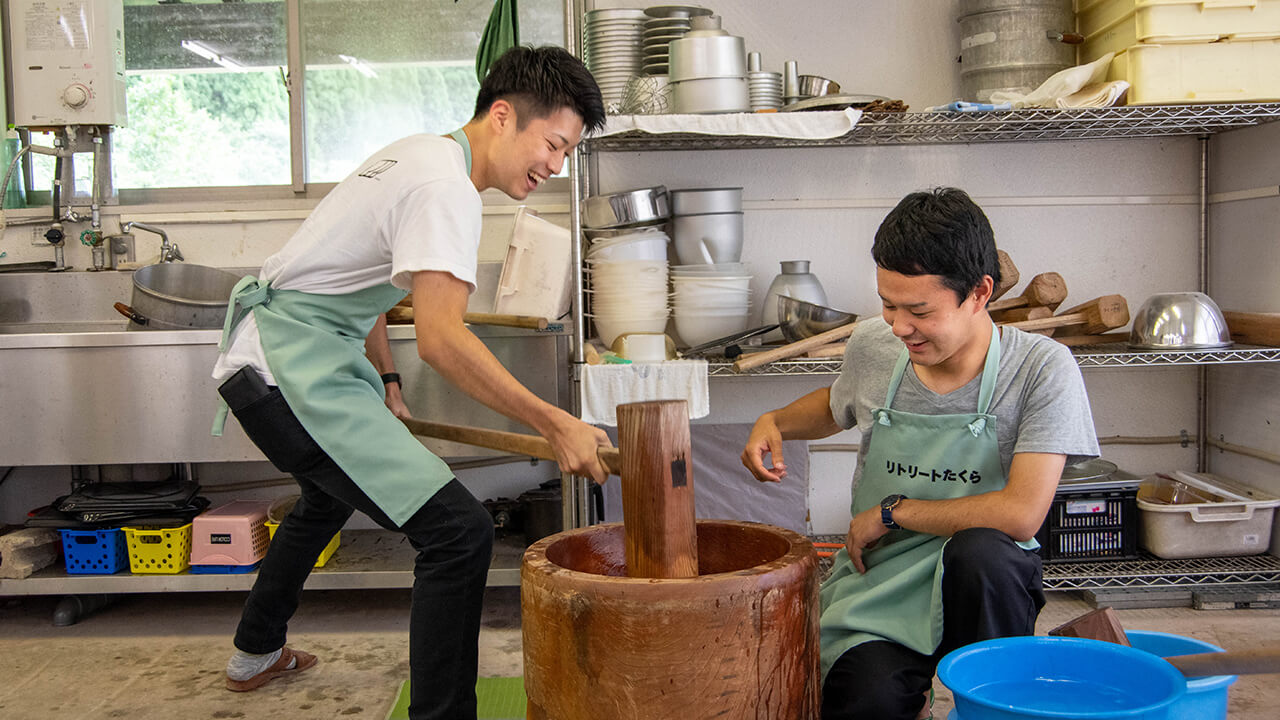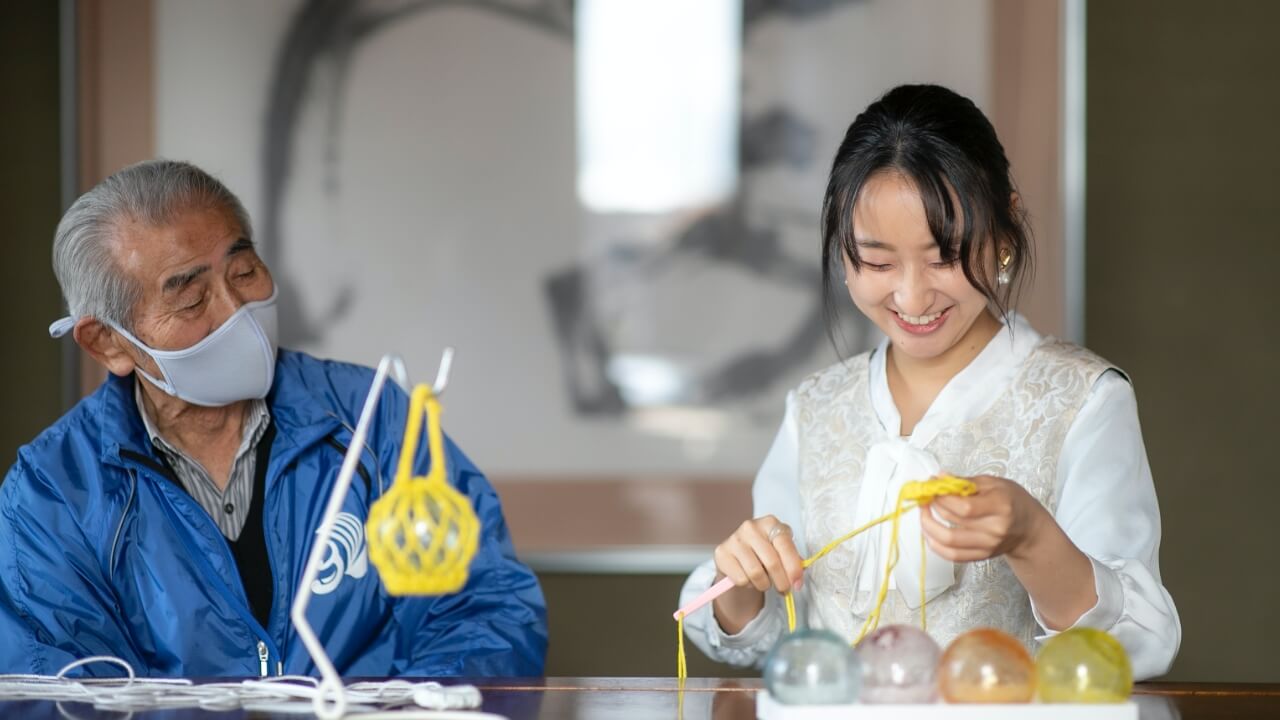Unpacking the charms of the Kitamae Shipowner Ukon Family Residence – a spot not to be missed when sightseeing in Minami-Echizen!
Posted on :
-1024x512.jpg)
Kono, located in the Kono area of Minami-Echizen, is positioned at the entryway to Tsuruga Bay, southernmost of the Echizen coast. For centuries, it has served as the transit point between land and sea for transporting supplies by connecting Fuchu, the old provincial capital (present-day Echizen City) and Tsuruga. From the mid-Edo Period, prominent Kitamae-bune shipowners along the coast of the Sea of Japan made a name for themselves by making use of the rapidly growing Kitamae-bune shipping route. The Ukon family was one of the most active of these shipowners. They amassed a huge fortune by operating cargo ships, and became an extremely wealthy merchant family, to the extent that they were considered one of the five great shipowners of the Sea of Japan.
This time, to let more people learn about the Ukon family, we’ll be introducing in more detail the story of this illustrious family, as well as the charms of the Kitamae Shipowner Ukon Family Residence, which is open to public.
To find out more, we spoke to Mr. Akihiko Inayoshi, who is a curator at the Minami-Echizen Town Educational Committee Office. He will walk us through the highlights of visiting the Ukon Family Residence, as well as the profound knowledge hidden in this sightseeing spot. It’s definitely worth reading this article before you pay a visit to the Kitamae Shipowner Ukon Family Residence!
Firstly, what are the Kitamae-bune ships?
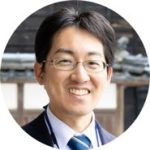
The Kitamae-bune ships were marine cargo ships that operated from the mid-Edo period to the late Meiji period, sailing to and fro between Osaka and Ezochi (present-day Hokkaido) along the Sea of Japan while buying and selling goods at the same time (a practice referred to as ‘kaizumi’). These ships were not just a carrier of goods, but were pretty much trading companies on the sea. The Kitamae-bune capitalized on the growing demand for herring fishmeal fertilizer, as well as the differences in prices of goods across regions to make a quick fortune. They not only distributed products produced in different regions such as rice, salt, herring, kombu seaweed, as well as daily necessities for day-to-day life, but also brought about population migration and the spread of culture. This contributed significantly to Japan’s economic development at that time.
Dreaming of making a fortune, many seamen headed out to sea to take a shot at the opportunity to get rich. At its peak, seamen sailing on the Kitamae-bune were said to have been able to earn 1000 ryo just from one round trip, which is equivalent to 100 million yen in present-day terms.
In 2017, 11 municipalities including Minami-Echizen Town came together to submit an application to have the Kitamae-bune recognized as Japan Heritage, and it is now designated as a Japan Heritage under the theme “The Kitamae-Bune Sea Routes: Ports and Residences Built on the Dreams of Brave Seafarers”. The cultural properties located in Kono, Minami-Echizen that are part of this Japan Heritage narrative are the Kitamae Shipowner Ukon Family Residence, the former Ukon Family Residence Seiyokan, and the Nakamura Family Residence.
Seamen braving the rough seas to help these “moving” trading companies generate great wealth, and bringing about prosperity across regions.
This story of the Kitamae-bune, their ports of call, and the shipowner settlements continue to be a fascinating point of unusual history even today.
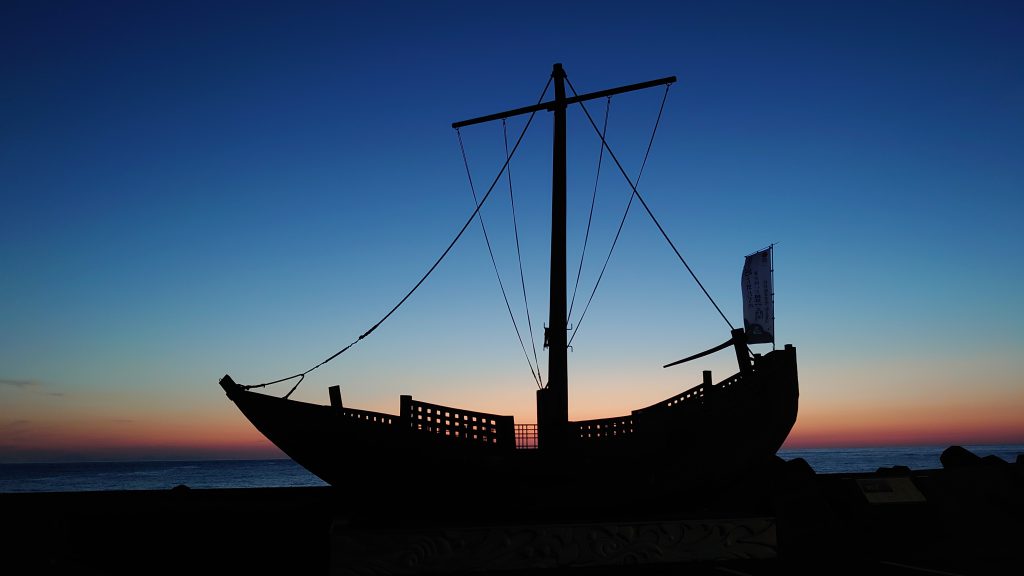
Tell us more about the prominent Kitamae-bune shipowners along the Sea of Japan, the Ukon Family.

The Ukon family started their shipping business around the late 17th century. Having lived in Kono for generations, the first Ukon Gonzaemon branched off into his own family clan after being gifted some land, a house, and a boat from their family temple Konso-ji.
By the time of Gonzaemon VII and VIII, the family had started venturing into the kaizumi business, where they bought goods from a certain region, and sold it to another region while buying other goods from that same region, repeating this across the various regions they had sailed to to earn profits. Trading on their own boats meant that they were constantly faced with danger, with profits and losses from fluctuations in goods’ prices, and even sometimes losing their boats and cargo to accidents at sea. Despite having to ride on the rough waves at sea, the Ukon family managed to survive the tough times, and their business developed greatly by the time of Gonzaemon IX. During the Bakumatsu at the end of the Edo period, they capitalized on the regional price differences of herring fishmeal fertilizer, which saw a growth in demand at that time, and profited greatly from it. The Ukon family had only owned about 2-3 ships up till this point, but they now expanded their fleet to 11, including their main ship, the Yahata-maru. Their annual profits reached up to 12,000 ryo (around 1.2 billion yen in current terms), and they became one of the 5 most prominent shipowner families in the Sea of Japan region.
During the time of Gonzaemon X, their fleet of cargo ships expanded to 17 with a total shipping capacity of 18,000 koku, making them a huge cargo fleet. However, from the mid-Meiji period, the Kitamae-bune’s cargo ship industry began to decline with the emergence of railways. At that point, Gonzaemon X quickly decided to bring in Western-style sailing ships and steamships to modernize the shipping industry, while at the same time going into the marine insurance business to pivot their business. They remained active in the marine industry, setting up Nippon Fire & Marine Insurance Co., Ltd (the predecessor to Sompo Japan Insurance today).
What kind of person was Gonzaemon IX, the key figure to the Ukon family’s growth?
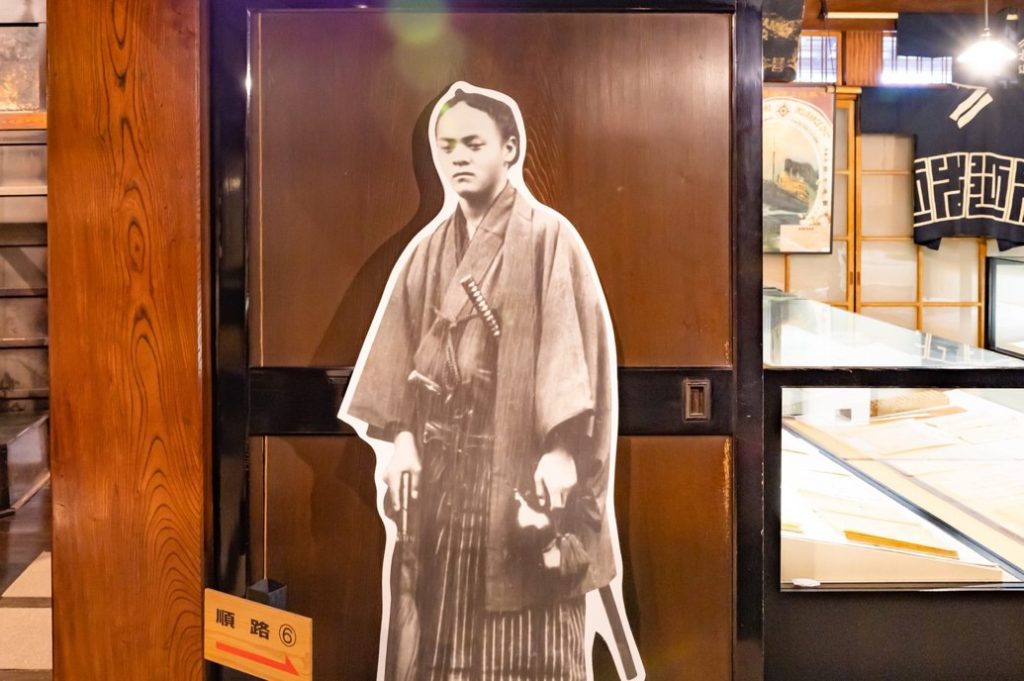

Gonzaemon IX became a boatman at 17, where he picked up the knowledge and skills to take charge of a cargo ship. He seemed to have been proficient at gathering information. If you look at the shipowner’s accounts, where Gonzaemon IX recorded all the ships’ trade dealings, you will see their revenue and costs from back then, and it is clear that he had a sharp mind from looking at these records. Not just Gonzaemon IX, but you can tell that each of the Ukon family heads were able to predict trends of their time accurately, and had an objective perspective.
On top of that, Gonzaemon IX was extremely good at business management, and proactively redirected the profits earned from managing the cargo ships to regional development. He used private funds to build up social infrastructure, and in the first year of the Meiji period, he started the building of a new road from Takefu (present-day Echizen City), the Kasuga New Road. This was a project undertaken together with his younger brother, Nakamura Sannojo from the Nakamura family, another prominent Kitamae-bune shipowner family. Many local residents were employed in this project, and he was extremely well-loved by the local people because of this. When Gonzaemon IX passed away in 1888, a memorial plaque was erected in Isshinji Temple in Osaka, where he mainly operated his business from, and over 150 names of his acquaintances were engraved on this plaque. He most likely had a wide network of connections, and we can tell that he was probably well-liked and respected by many people for his character.
What kind of place is the Kono Kitamae-bune Shipowner Street?
-1024x768.jpg)

The Kono Kitamae-bune Shipowner Street is located in a small alley in the direction of the mountains when coming off the National Route 305, which is right beside the Sea of Japan. This is a street around 200m long running north to south, with the Nakamura Family Residence (another shipowner family that amassed great fortunes together with the Ukon family) in the middle. This is a settlement located on a small section of flatland below jagged cliffs of rock strata that plunge into the sea, and the houses are lined up along the coast.
The houses owned by the Kitamae-bune shipowner families have an interesting layout, where they build earthen-walled storehouses on the side facing the sea to keep out the sea breeze, and the main residence building is built on the side facing the mountains. On top of the magnificent houses owned by the shipowners who brought about riches and prosperity of the Kitamae-bune, the unique scenery of the Kono Kitamae-bune Shipowner Street is also extremely charming. While walking on this street, you catch a glimpse into the bustling activity and history back in the heyday of the Kitamae-bune.
What kind of place is the Kitamae Shipowner Ukon Family Residence?
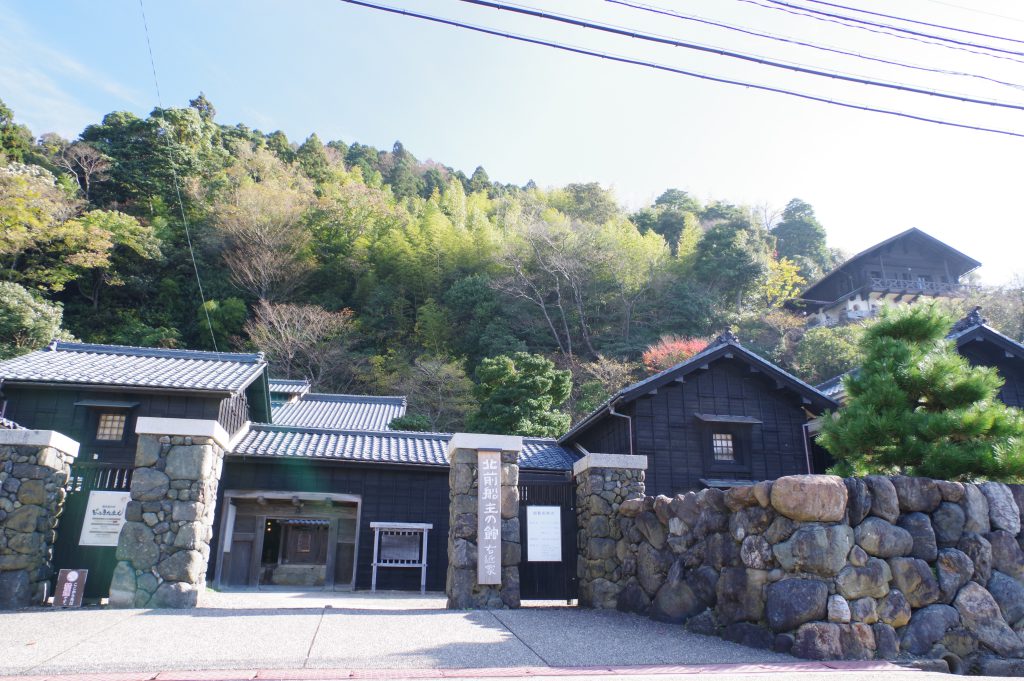

This is the residence of the Ukon family built by Gonzaemon X, and is now open to public as a history museum preserving traces of what life looked like back then, and also important artefacts and documents relating to the Kitamae-bune.
The nagaya-mon (a door in the middle of a long rowhouse) of the nurigome (a building with heavily plastered walls) opens towards the sea, and within the grounds of the residence, there is a narrow road in the settlement (the Kono Kitamae-bune Shipowner Street). This road is flanked by the main residence building and 3 inner storehouses facing the mountains and 4 outer storehouses facing the sea. The main residence was rebuilt in 1901 based on the layout of the house back in the Tenpo era. This is a two-storey hirairi-style (where the main entrance is located at the side of the building) building with a grand layout. The building has a tiled roof with a kirizuma-style design (a gabled roof) modeled after Kansai-style architecture, and the thick wooden pillars of the house are made from Japanese zelkova (keyaki) and cypress (hinoki), which was likely transported to the region by the Kitamae-bune. The bottom beams of the floor are finished in black lacquer, and thee carvings and decorations reflect exquisite craftsmanship that were inspired by the culture in Kansai. The earthen-walled storehouses all have two storeys, and there are 3 outer storehouses to the south, and one to the north. The roofs are tiled with Echizen-style tiles, and round tiles with the words ‘Ukon’ engraved can be found at the end of each roof hinge.
Tell us the highlights of the Kitamae Shipowner Ukon Family Residence.
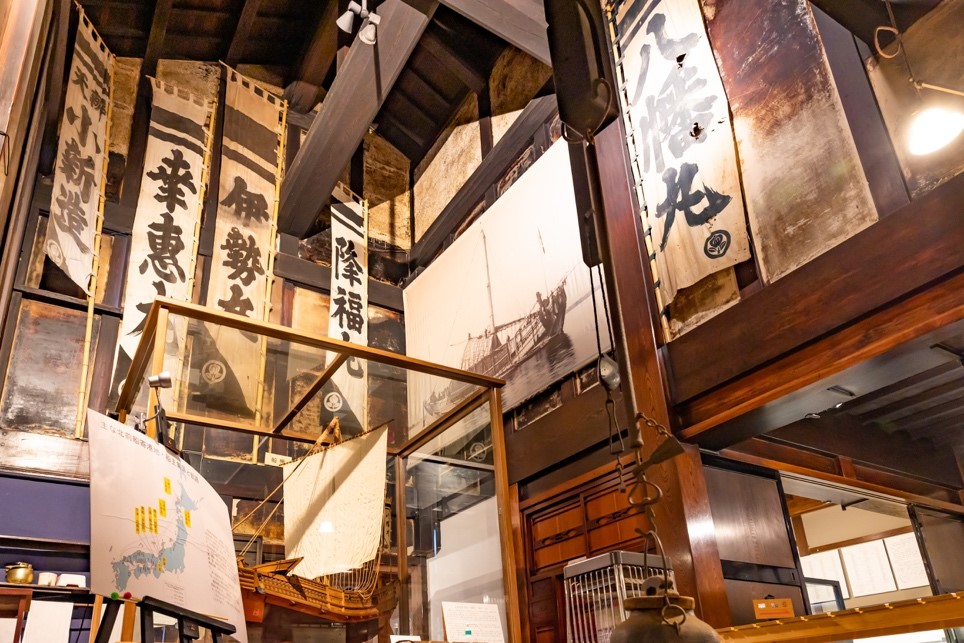

Many artefacts are preserved and on display to the public in the residence, such as a 1/20 scale replica of the Ukon family’s main ship – a Kitamae-style trading vessel named the Yahata-maru, as well as the banners and signage that were used on the Yahata-maru back when the Ukon family used to be a wholesaler for cargo ships. The shipowner’s account book used to record the Kitamae-bune’s trade dealings, as well as a collection of old household furnishings are also on display here.
Firstly, when looking at the replica of the Ukon family’s signature ship, the Yahata-maru, something worth noticing is that the sails of the ships owned by the Ukon family are plain and undecorated. In most cases, ships’ sails will usually have emblems or logos on them. But the Ukon family’s plain white sails must have stood out from afar in the middle of the sea.
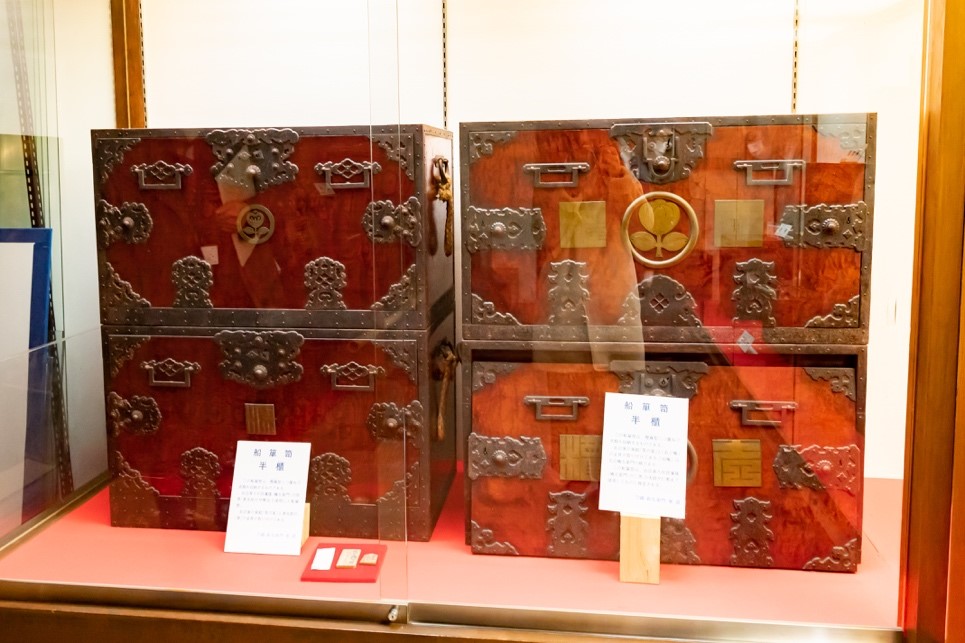
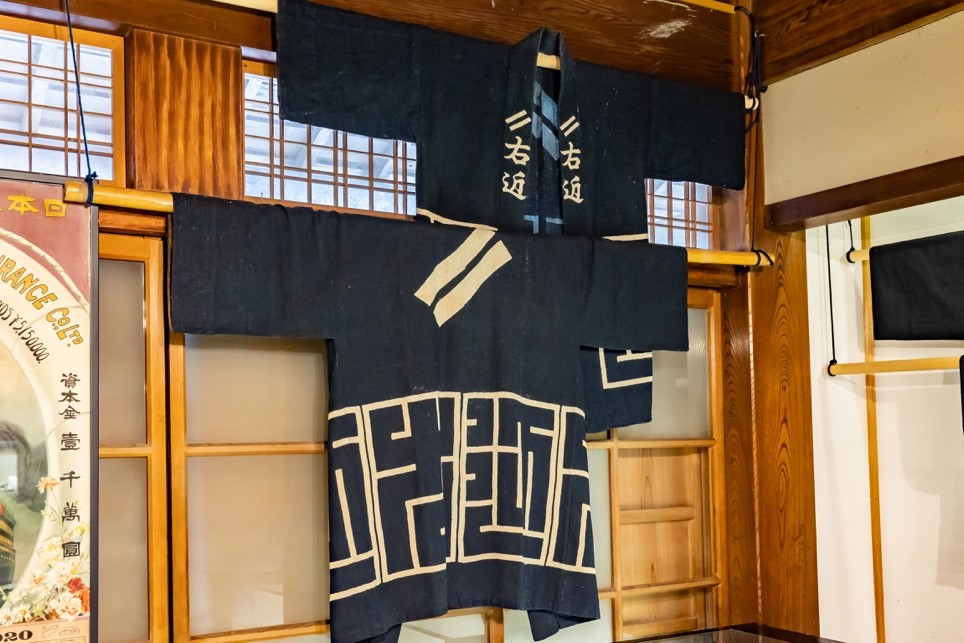
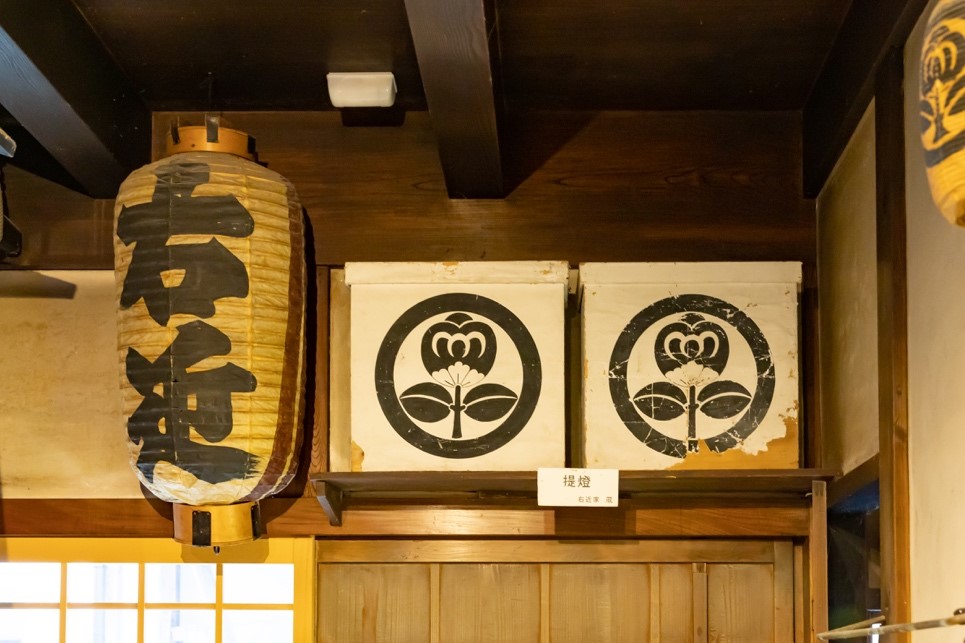

You can see an ornate set of chest of drawers that was used onboard by the ship captain of the Ukon family’s ships, which have on it decorative metal hardware engraved with characters that form the initials of Ukon Gonzaemon, as well as the Ukon family crest of the chanomi (tea seeds). Also preserved here are the shirushi-banten jackets with the Ukon family’s shop logo (which resembles a pair of chopsticks), and lamps with the family crest painted on it. These artefacts give us an idea of how wealthy and prosperous the family was back in the day.
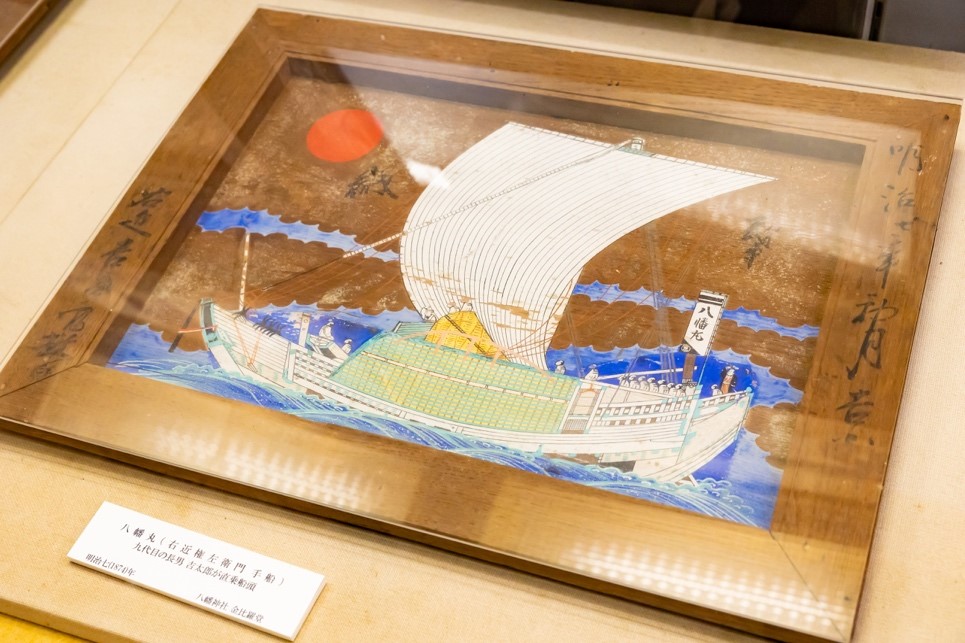

Do also take a look at the ship ema (prayer plaques) that were offered to shrines and temples to pray for safe travels at sea when embarking on sailing trips. You will notice that from the illustrations that the design of the ships become more modern with time, and the ships from the Meiji period have obvious Western influences. Having these nuggets of knowledge before visiting will definitely have an impact on your experience viewing these artefacts, and I’m sure it’ll be even more enjoyable this way.
The Kitamae Shipowner Ukon Family Residence is a treasure trove for artefacts and records related to the Kitamae-bune, which will offer a glimpse into the wealth and prosperity of the Ukon family. But on top of that, it is worth focusing on the individual members of the family, especially the 9th and 10th generations of the Ukon family head, who were deeply respected by many people for ushering in a new era into Japan’s shipping industry. Viewing the museum’s displays from the following three perspectives – artefacts, the human side of the Kitamae-bune shipowners, and the historical background – will definitely enhance your experience when visiting.
If you want to learn more about the Ukon family, definitely pay a visit to the Kitamae Shipowner Ukon Family Residence.
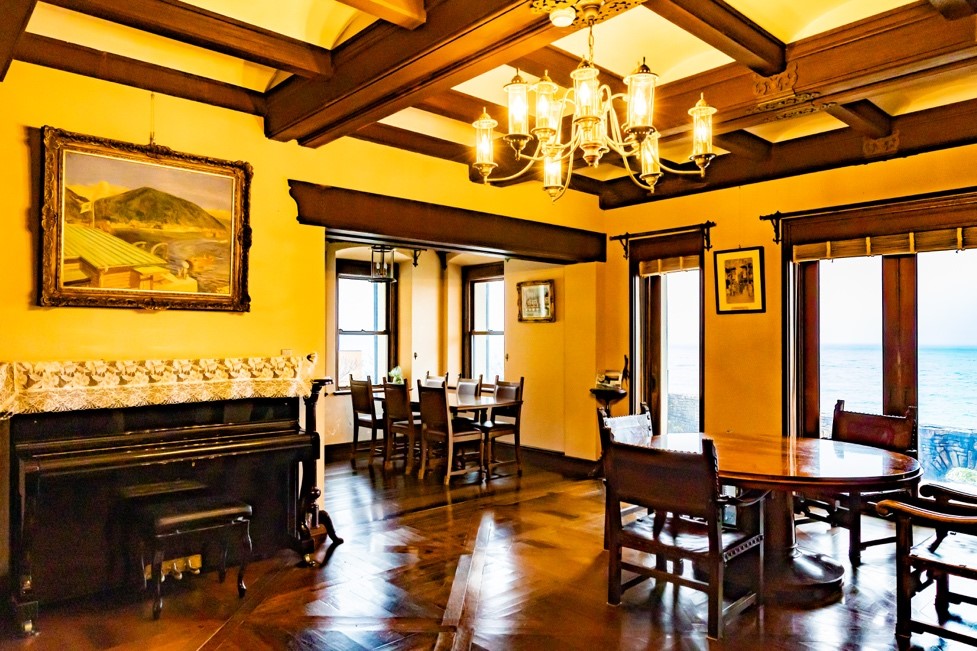

On a hill behind the main residence stands a 2-storey villa – the former Ukon family residence Seiyokan. This building is one of the registered Tangible Cultural Properties of Japan. The exterior of the first floor is inspired by Mediterranean and Spanish architectural styles, and the second floor is modeled after the mountain cottages in Switzerland. The interior features colorful tiles surrounding the hearth, and stained glass windows, which show a modern taste in the choice of design.
This was built by Gonzaemon XI in the Showa period, and was said to have been a building project initiated with the purpose of helping the community and providing employment opportunities during the Showa Depression, when many local townspeople lost their jobs. You can see how through the generations, the Ukon family has always been committed to giving back to the local community, and prioritizing relationships between people.
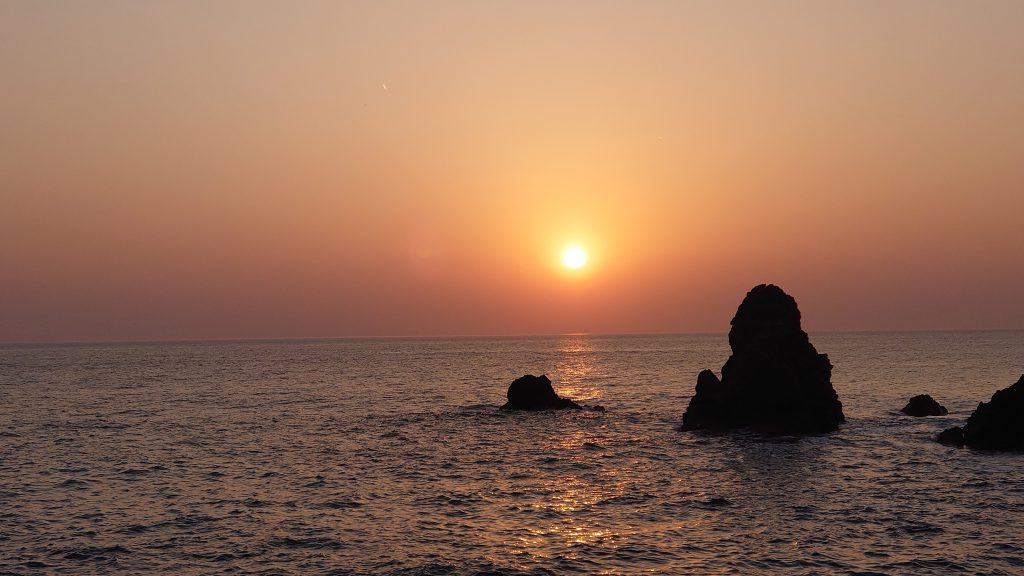

The view from Seiyokan overlooking the Sea of Japan and the townscape of Kono is spectacular. On days with clear weather, you might even see the tip of the Tango Peninsula across the horizon. Just below, you can also see a rock shaped like a monk with his hands in prayer. I also highly recommend the views at dusk, with the sun setting into the sea.
Lastly, tell us a little about the Nakamura family, the other Kitamae-bune shipowner family that was active alongside the Ukon family.
-1024x768.jpg)

Aside from the Ukon family, it is also worth paying attention to the other prominent shipowner family, the Nakamura family. The Nakamura family hailed from the navy of the Kawano clan in Iyo Province, and prior to the Meiji period, the head of the family of each generation inherited the name Nakamura Saburoemon. It was said that the family resettled along the Kono area after being a part of the Siege of Kanegasaki during the Nanboku-cho period. The younger brother of Ukon Gonzaemon IX, Unosuke (also known as Nakamura Sannojo) was adopted into the Nakamura family, which made the two families related to each other, and the family flourished together with the Ukon family as one of the prominent Kitamae-bune shipowner families along the Sea of Japan.
The Nakamura Family Residence was designated as a National Important Cultural Property in 2015. It is usually closed to the public, and you can only view it from the outside. The interior is specially open to the public on irregular dates a few times a year, but currently it is under works for maintenance.
Conclusion
In this article today, I told you a little bit about the stories of the Kitamae-bune shipowners, but nothing beats coming to take a good walk along the Kitamae-bune Shipowner Street to learn more about them.
By experiencing the unique sights and way of life of the community in the Kono area of Minami-Echizen, you can feel the history and spirit of the brave Kitamae-bune shipowners who sailed on the vast waters of the Sea of Japan.
On your next day off, explore the history of the Kitamae-bune shipowners and traces of the notable figures who lived here in this seaside town.
【Kitamae Shipowner Ukon Family Residence】
2-15 Kono, Minamiechizen-cho, Nanjo-gun, Fukui-ken
Telephone no.: 0778-48-2196
Opening hours: 9am-4pm
Closed on: Wednesdays, end-of-year and New Year holidays (29 December to 3 January)
Admission fees:
Adult (high schoolers and above) – 500 yen; children (elementary and middle school students) – 300 yen
Group discount (20 people and above): Adult – 450 yen; children – 270 yen
【Getting here】
〇By car
(From the Kansai/Nagoya area)
・Around 20 min drive from the Hokuriku Expressway Nanjo Smart IC via National Route 305
・Around 40 min drive from the Hokuriku Expressway Tsuruga IC, taking National Route 8 up northwards, via Echizen Kono Shiokaze Line and then National Route 305
(From the Ishikawa/Fukui area)
・Around 20 min drive from the Hokuriku Expressway Nanjo Smart IC via National Route 305
・Around 30 min drive from Hokuriku Expressway Takefu IC, going down southwards on National Route 8, and heading onto National Route 305 at the Sakurabashi Junction
〇By train
Alight at JR Hokuriku Line Takefu Station, or Echizen Railway Takefu Station, and take a 40-minute bus ride on the Oshio-Kono route
【Related links】


